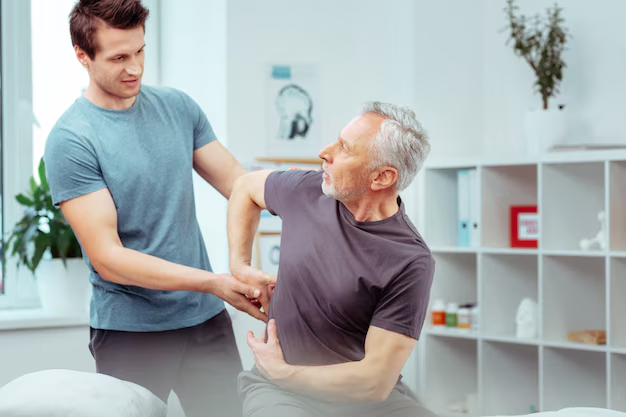Can Massage Therapy Alleviate Arthritis Pain?
Arthritis is an ailment that plagues countless individuals, affecting everything from ease of motion to quality of life. If you're navigating the daily challenges posed by arthritis, chances are you've asked yourself, "Can massage therapy offer some relief?" Here, we delve into how massage might help those with arthritis and offer a comprehensive overview of what you should consider.
🤔 Understanding Arthritis
What Is Arthritis?
Arthritis isn't a single disease but rather an umbrella term for several conditions characterized by joint inflammation. The most common types of arthritis include osteoarthritis and rheumatoid arthritis. These conditions lead to pain, swelling, stiffness, and decreased range of motion.
Impact on Daily Life
For those living with arthritis, everyday activities such as walking, climbing stairs, and even gripping a pen can be formidable challenges. The pain and stiffness can fluctuate, sometimes leaving you feeling like your body is no longer your own.
💆♂️ How Does Massage Therapy Work?
Fundamentals of Massage
Massage therapy involves manipulating muscles, tendons, and ligaments to enhance function and promote relaxation. Techniques vary but often include kneading, rolling, and gentle pressing.
Benefits for the Body
Massage is more than just a luxury; it's a therapeutic practice that can improve circulation, relieve tension, and increase endorphins—the body's natural painkillers. For some conditions, these benefits prove invaluable.
🧐 Can Massage Help With Arthritis Symptoms?
Eases Muscle Tension and Pain
Massage therapy may help reduce muscle tension and alleviate pain—common issues for those with arthritis. By promoting blood flow, massage can also aid in reducing inflammation and swelling around joints.
Improves Range of Motion
For those who feel like arthritis ties them down, the best news is that massage often increases joint flexibility and range of motion. Techniques focusing on stretching and relaxing muscles contribute to improved mobility.
Reduces Stress and Enhances Mood
Living with chronic pain is emotionally draining. Massage can serve as a form of emotional and mental sanctuary, helping reduce stress, uplift mood, and provide an overall sense of well-being.
💡Types of Massage Techniques for Arthritis
1. Swedish Massage
This is one of the more gentle forms of massage suitable for arthritis sufferers. It uses long strokes, kneading, and circular movements on top muscle layers to relax and energize.
2. Deep Tissue Massage
Well-suited for chronic pain and tension, deep tissue massage targets deeper layers of muscles and connective tissues. This type may not be suitable for severe arthritis but can help in cases of milder symptoms.
3. Myofascial Release
This technique focuses on releasing muscle tightness and shortness through slow and sustained pressure on the myofascial tissues. It helps improve pain and increase range of motion.
4. Trigger Point Therapy
Trigger points are tight areas within muscle tissue that cause pain. By focusing on these points, this therapy intends to reduce pain related to arthritis.
🧩 Complementary Therapies to Massage
While massage therapy is beneficial, it's often not a standalone solution. Here are other complementary therapies that can work in tandem with massage:
- Acupuncture: This ancient Chinese practice involves inserting thin needles into specific points to relieve pain.
- Physical Therapy: Guided exercises tailored to strengthen the muscles around your joints.
- Occupational Therapy: Strategies that help make daily activities easier and safer.
- Yoga and Tai Chi: These offer gentle exercise options for increasing flexibility and strength.
🔍 What to Consider Before Booking a Massage
Consult Your Healthcare Provider
Before booking an appointment, it's essential to consult your healthcare provider to determine if massage is a suitable option for your specific type and severity of arthritis.
Choosing a Qualified Therapist
Not all massage therapists specialize in arthritis care. Look for therapists certified in treating arthritis patients to ensure the best care. Communicate openly about your condition to tailor the session to your needs.
Allergic Reactions
Some oils and lotions used during massages can irritate the skin. Specify any allergies or skin sensitivities to your therapist beforehand.
🌟 Key Takeaways
- Massage can reduce muscle tension, enhance mood, and improve range of motion.
- Choose the right therapy type based on your arthritis symptoms and severity.
- Always consult your healthcare provider before starting any new treatment.
📅 Moving Forward: Practical Steps
- Experiment: Try different types of massage to see what best fits your needs.
- Regular Appointments: Consistency can often yield better results than one-off sessions.
- Integrate Therapy: Consider complementing massage with physical or occupational therapy for a well-rounded approach.
- Self-Care: Perform stretches and exercises recommended by a professional to maintain mobility at home.
Navigating arthritis is a challenging journey, but options like massage therapy offer a beacon of relief. Armed with the proper knowledge and support, you can explore diverse therapeutic paths that not only manage pain but also enrich your quality of life.

Related Topics
- a Septic Arthritis
- Are Bananas Bad For Arthritis
- Are Tomatoes Bad For Arthritis
- Can An Inflamed Nerve Cause Arthritis
- Can An Inflamed Nerve Cause Arthritis In Dogs
- Can An x Ray Show Arthritis
- Can Arthritis Be Cured
- Can Arthritis Be Reversed
- Can Arthritis Become Septic After Infection From Injection
- Can Arthritis Cause Numbness